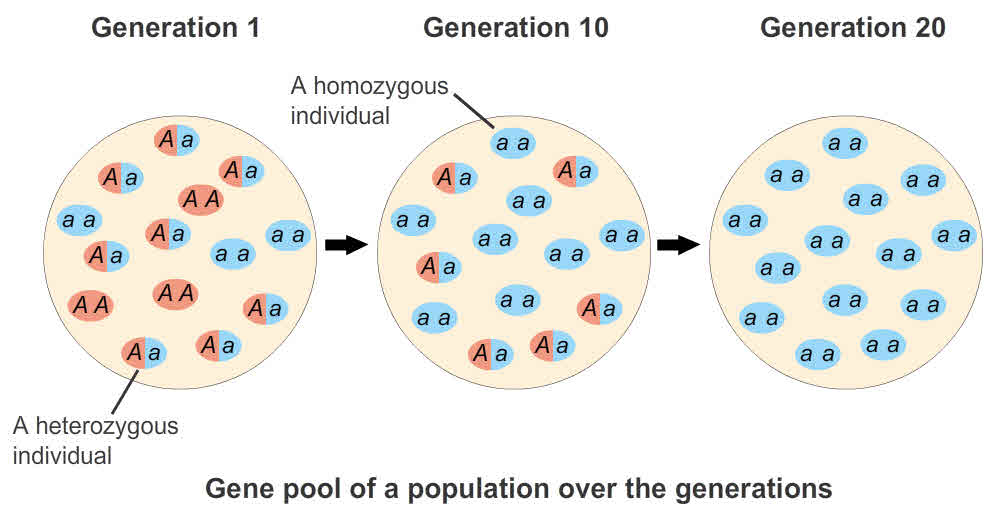For a population to evolve, its members must possess heritable genetic variation, which is the raw material on which mechanisms of evolution act. One mechanism of evolution, called genetic drift, describes random (rather than adaptive) genetic changes in a population.

Genetic drift can be observed in this small population. Generation 1 of the population has two alleles—A and a—at a particular gene locus, with each allele represented equally in the population (allele frequencies of 0.5). By chance alone, the frequencies of the alleles in the population change over the generations. In this example, by generation 20, one allele is lost while the other becomes "fixed."
In small populations, genetic drift may produce large changes in allele frequencies over time. Any allele, including harmful ones, may increase in frequency, and rare advantageous alleles may be lost. Even in large populations, genetic drift can influence the frequencies of neutral alleles (which do not affect the survival and reproductive rates of their bearers). Alleles reach fixation or loss in shorter times in smaller populations.
Click on the Next button below.

